Like bees, wasps are part and parcel of the great outdoors and a summer fixture. We see them hovering over a flower, perching on a shed, or zooming towards an unknown destination. But beyond their characteristic black and yellow coloring and their reputation for delivering nasty jabs in rapid succession, we don’t know that much about them.
Nevertheless, wasps are fascinating creatures and actually play an important role in our gardens and the ecosystem as a whole.
One of the best ways of getting to know them is by taking a look at their diet.
So what do wasps eat?
Wasps enjoy a varied diet consisting of both plant and vegetable matter. Examples of foods they eat include:
- Insects
- Spiders
- Plant products: nectar, pollen and fruit
- Larval secretions
- Honey
- Human food: soda, cake, processed meats
What do they get up to in search of a meal? Do they steal food from each other? And just how likely are they to take a bite out of each other? What creatures are likely to take a bite out of them?
You will be able to discover all you need to know about these questions in today’s post.
What Wasps Love To Eat
Insects
Wasps are something of an apex predator among hexapods, making them the arthropod equivalent of a big cat or hawk as far as several other six-legged nature dwellers are concerned.
Thanks to the abundance of small and not-so-small insects, protein is never in short supply. These winged hunters are pretty efficient at taking advantage of the bounty that they often need to provide to hungry larvae back at their nest.
Parasitoid wasps are renowned for their sinister habit of targeting the eggs, larvae, or adults of other species and laying their eggs on or in them. The result is that the unsuspecting victims go about their daily quest for food, unaware that they are being eaten from the inside until it’s too late.
Some of these wasps’ favorite targets include greenflies, stink bugs, whiteflies, and scale insects. A number of them have a preference for moth and butterfly caterpillars as well.
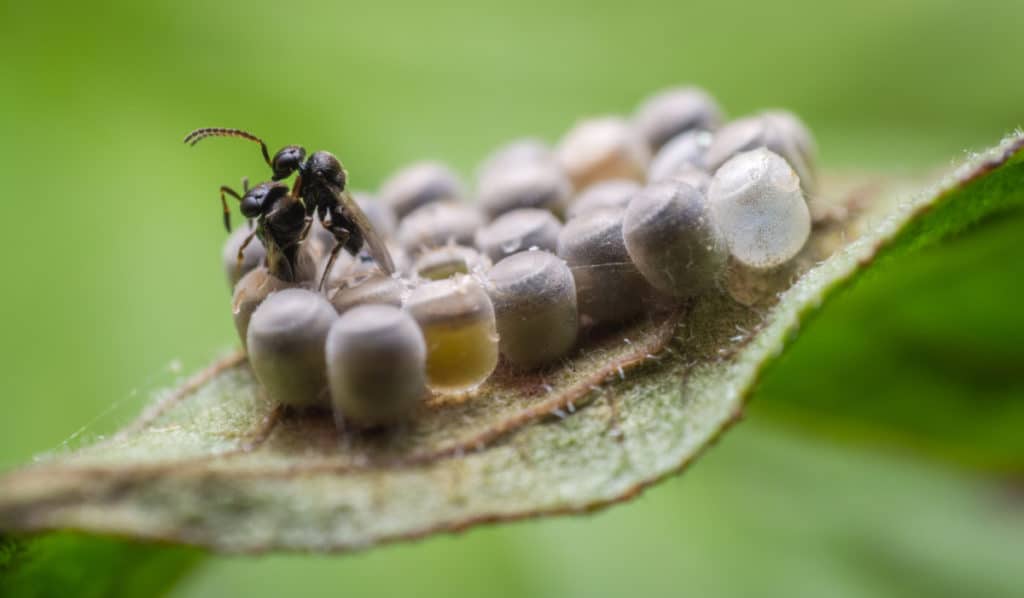
Aphids are also a favorite victim and in this case, they are undone by their honey-sweet secretions which makes them a moving target and provides a trail that will lead one of these predators right up to them.
It is for this reason that this large family of winged stingers is often considered to be a gardener’s best friend.
Not even insects which are powerful predators in their own right are safe from wasps. The Asian giant hornet, the largest and most venomous wasp of all with a stinger which is sufficient to cause humans great pain.
This species with cannibalistic leanings is quite capable of taking on mantids and does so on occasion. This wasp which is also nicknamed the ‘murder hornet’ is also quite capable of digesting protein as an adult, and will help itself to its victim’s delectable juices, while feeding carefully chopped up bits to its young. However, its true claim to fame is as a raider of beehives with often devastating consequences.
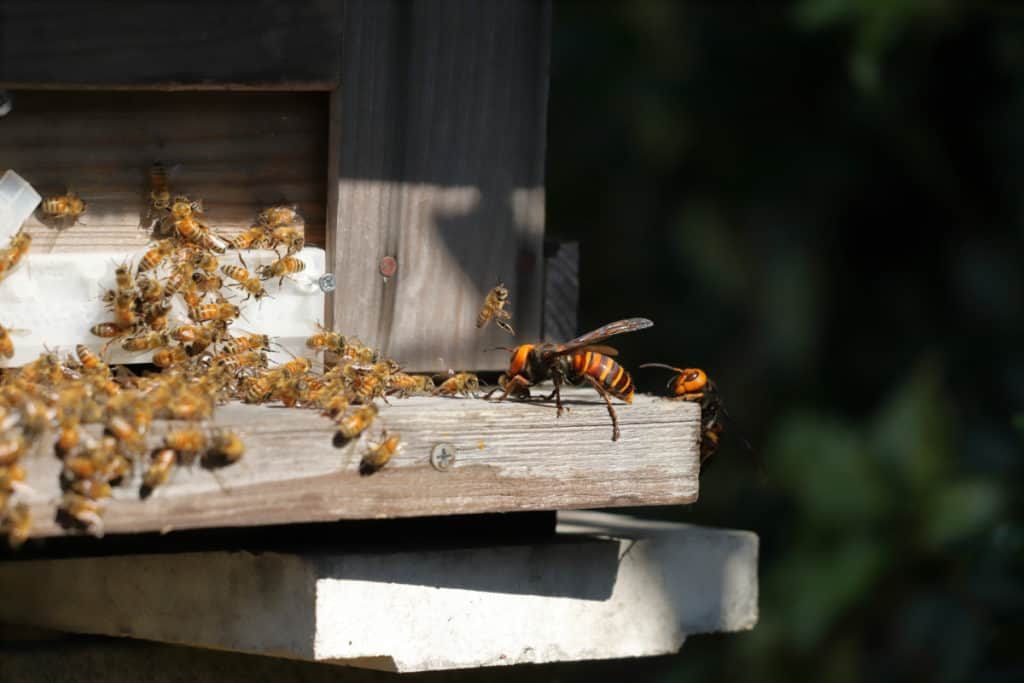
The species is actually known to launch highly organized attacks on beehives during which victims going about their own business are snatched out of the air while backup troops swiftly decapitate defenders. As a matter of fact, one single invader is capable of taking out no less than forty bees in just a minute and 50 of them can decimate an entire hive.
Spiders
These arachnids are often targeted by the aptly named spider wasp, a species of parasitoid wasp, which specializes in hunting both ants and spiders to feed its young. Size is no deterrent and even larger arachnids are known to fall victim to the cunning and hunting prowess of this solitary species.
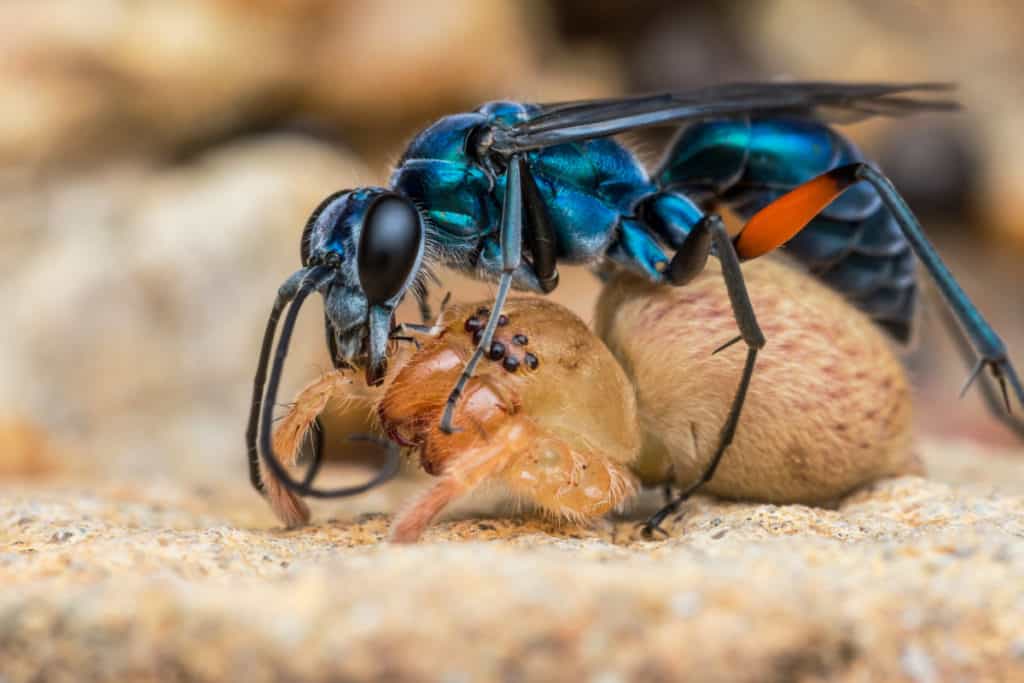
Another specialist hunter is the tarantula hawk which goes after one of the largest and most powerful eight-legged predators there is. The struggle between them is mostly one-sided with the wasp gaining the upper hand on almost every occasion and dragging its immobilized victim back to its lair to serve as sustenance for its offspring.
Nectar And Pollen
Despite their carnivorous beginnings, several wasp species do not retain their ability to digest protein once they attain adulthood. This stage of their lives also coincides with the activation of their sweet tooth and they will flit from flower to flower helping themselves to the sugary nectar they contain and a bit of pollen which in turn helps in the pollination of the plant.
Examples of some of their favorite plants include Queen Anne’s lace, forsythia, and yarrow. (Yet for some reason, they don’t bother with red flowers which might spell good news for gardeners who have a special fondness for scarlet blossoms).
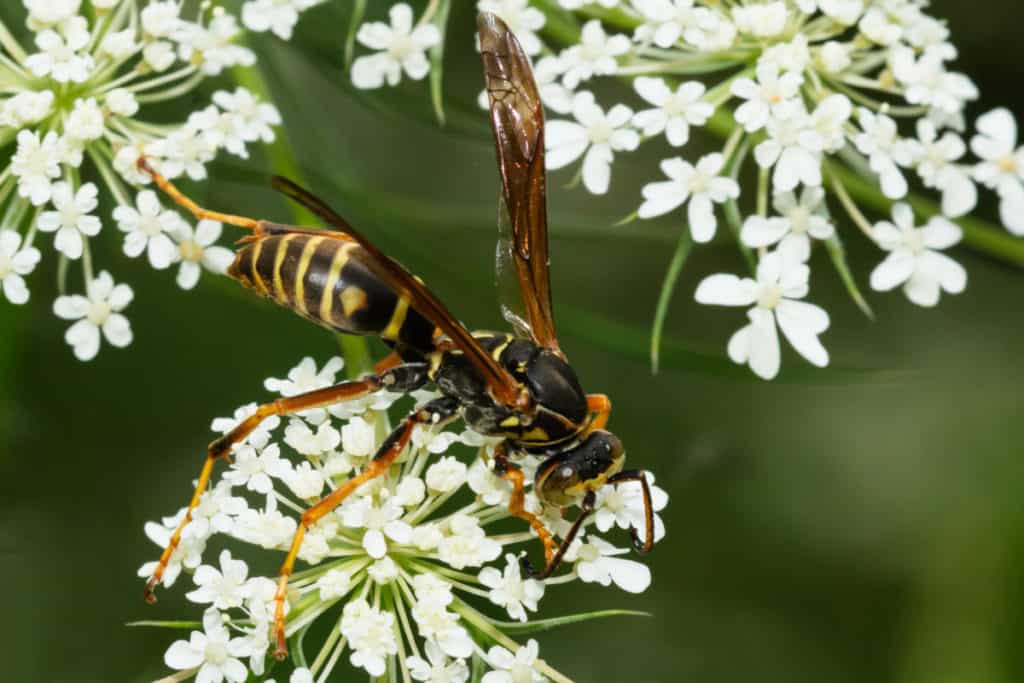
This love of flowers also means that wasps like their apian relatives love the smell of perfume and may decide to buzz a bit closer to you to take a sniff if you happen to be wearing some.
Fruit
As fruit tends to ripen in the summer, birds will occasionally swoop down and take a peck out of their fragrant crispness. Such an occurrence will result in their juices running free attracting wasps such as paper wasps and yellowjackets which will home right in on those openings on the fruit and start to feed.
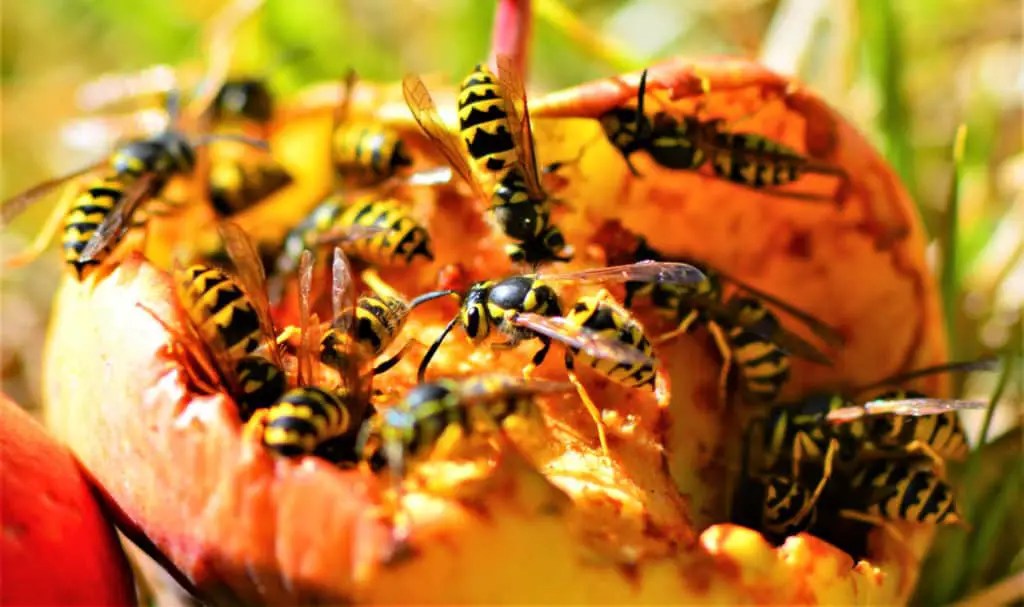
Pears and apples can be especially affected leaving orchard owners and farmers with the task of how best to protect their harvest from the unwelcome attentions of these winged visitors.
If you are interested we have written an article that compares the yellowjackets to other wasps. The article is called, Wasps Vs Yellowjackets.
Larval Secretions
The larvae of several social wasps tend to produce nutrient-rich saccharine secretions which provide a bountiful supply of sugary goodness to cater to their caretakers’ love of all things sweet.
One such species which relies on these salivary secretions is the Asian paper wasp (Polistes Chinensis).
It is a remarkable twist in which adults derive sustenance from their offspring while also catering to them in turn.
Honey
Wasps are very partial to honey and have no qualms about going on the offensive to rob a hive of its stores of honey.
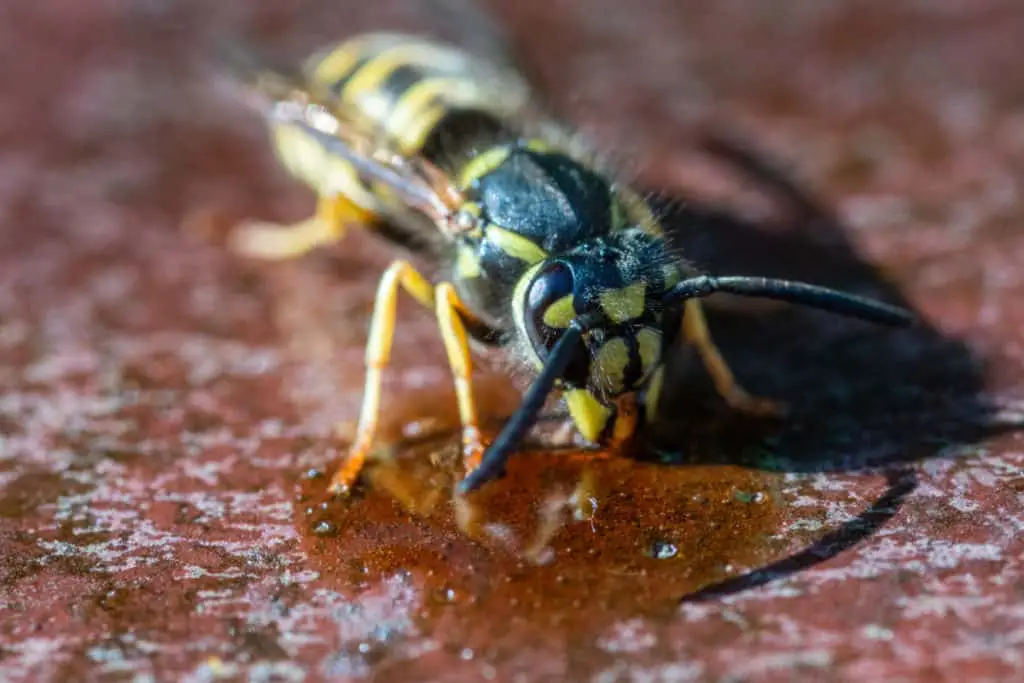
European hornets are known to occasionally mount raids on beehives and help themselves to honey, bees, and larvae.
Yellowjackets are also known to swoop down on hives, steal honey, dispatch the occupants and take off with leftovers for waiting for larvae back home.
Unsurprisingly, the worst offender is the Asian giant hornet which has a remarkable fondness for the honey produced by honey bees.
Human Food: Soda, Cake, Processed Meats
A wasp in search of a sugar fix can be surprisingly adaptable and there are times when any source of sweetness will do. Like that glass of orange soda which has been left unattended for a while on a garden table or that open jar of raspberry jam close to your kitchen window.
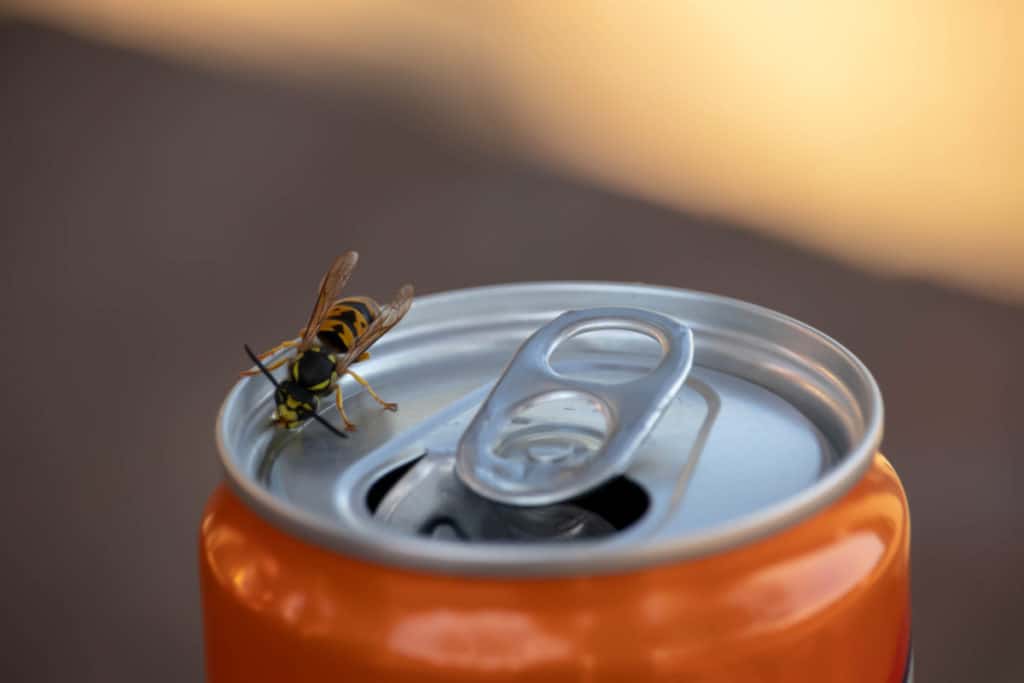
Yellowjackets are especially flexible in terms of diet and have been known to munch on cakes, sausages, tuna, chicken, and turkey.
If you are interested we have a whole article about wasps’ interest in eating meat. The article is called, Do Wasps Eat Meat?
How Do They Hunt?
Most wasps which attack flying insects are quite capable of launching an offensive in full flight. Examples of such skilled aerial hunters include cicada killers which attack a cicada, bear it to the ground, immobilize it and lug it off to a nearby nest.
If you are interested in how fast wasps can fly, then check out this article we have written, How Fast Can Wasps Fly And Can You Outrun Them?
Asian giant hornets are also another wasp species capable of executing aerial attacks with remarkable precision as can be seen by their ability to swoop down on bees approaching their hive and dismember them.
Others such as the tarantula hawk display amazing feats of stealth and strength. Females approach giant arachnids which are significantly larger than they are, sneak underneath them and toss them over and deliver that lethal sting. Alternatively, they may pretend to be trapped in the spider’s web, tempting their would-be victim closer and bringing out their stinger at the last minute.
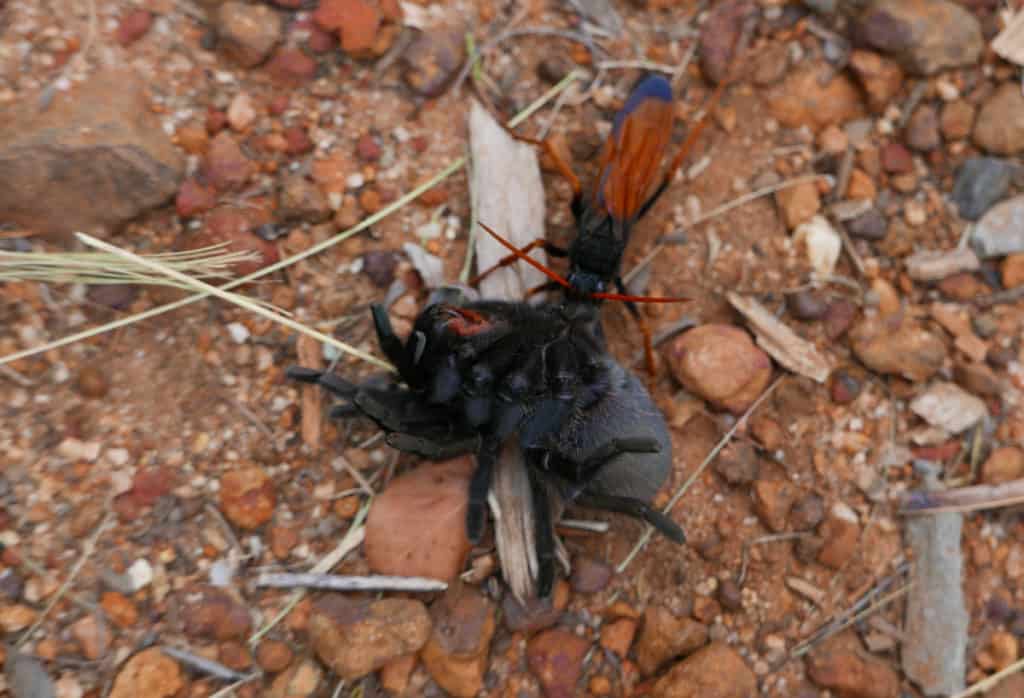
That last step makes all the difference and the sting of the tarantula hawk wasp has been compared to an electric shock by experts and actually has a rating of four (the highest) on the Schmidt Pain Index.
It is a high-stakes battle from which the wasp nearly always emerges the victor despite its opponent’s powerful jaws.
Hearing how proficient wasps are at killing their prey raises the question of how dangerous are wasps to people? We have done the research and written an article specifically about this. If you are interested the article is called, Are Wasps Dangerous?
Are Wasps Cannibals?
Quite a few species of wasps will turn their hooded gaze on their fellow winged predators should the need arise.
Common wasps are one such example, although in fairness to them such an occurrence only takes place following the demise of their queen. During the ensuing breakdown of law and order, workers will begin to feed on each other, while others desert the hive, resulting in its disintegration.
The Asian giant hornet is known for its ability to take down large prey, and unsurprisingly, it also targets other fellow wasp species as well, swiftly converting them into a nutritious dinner for itself and its offspring.
The Asian paper wasp (Polistes Chinensis Antennalis) is also known to dine on its own larvae during lean times – mostly when a queen is attempting to start a new colony. Under such circumstances, the parent will not only feed on larvae but will share them with their larger siblings. However, their continued survival is dependent on their ability to continuously provide saccharine secretions, failing which they will share the fate of their siblings they’ve fed on.
There is also the Copidosoma Floridanum, also described as the cabbage looper moth’s ultimate nemesis, which is actually involved in a rather unusual case of cannibalism.
The female will lay an egg in the moth’s and the unsuspecting caterpillar will hatch quite unaware that that single wasp egg has morphed into a bunch of tiny eggs. Eventually, thousands of wasp larvae will emerge.
And though the majority of them will be identical versions of each other, a few hundred of them will be equipped differently with giant jaws. These scary little guys will attack their own siblings and eliminate as many as possible. However, it is the lookalikes that get to survive and feast on the moth larva which will develop to full adulthood while the sharp-toothed assassins will remain where they are.
Wasps Steal Food From Ants
In addition to their status as ruthless predators, certain wasps are pretty good at thievery too. Some of them such as the African swarm-founding wasp take special delight in sneaking ants’ food when the latter are unaware or by simply zooming in and taking off before they can snap back with their mandibles.
Others carry out an organized heist with a few other wasps during which some of them will hold off the ants while the others make a quick getaway with the spoils.
Wasps Take Over The Bodies Of Cockroaches
Jewel wasps are also notorious for taking over the bodies of cockroaches laying an egg inside the body of the cockroach.
First, they catch and sting the cockroach, paralyzing the cockroach. Then they chew off its antennae before leading the cockroach back to its nest where the jewel wasp lays an egg inside the still living cockroach. The larvae hatch and feed before pupating inside the cockroach.
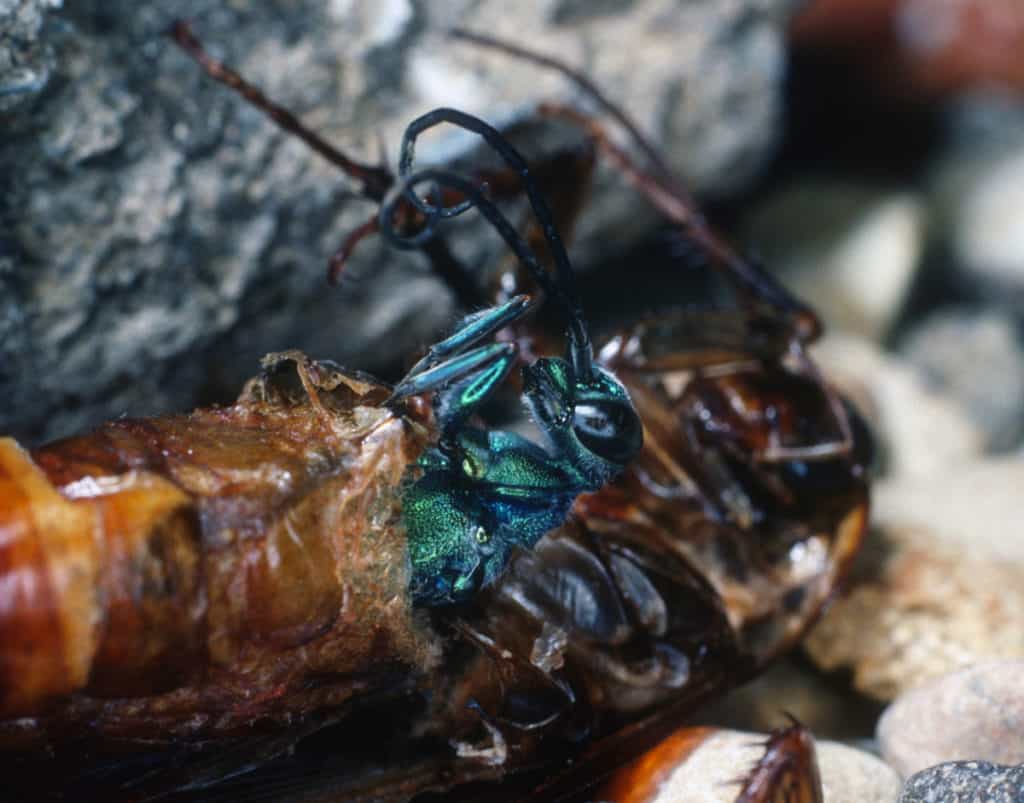
Once fully developed an adult jewel wasp emerges from the body of the cockroach.
Influence Of Wasps’ Dietary Choices On The Environment
Pest Control
Wasps’ position as apex predators among insects, means that they often eliminate several harmful parasites such as aphids, scale insects, and whiteflies. It also means they get rid of caterpillars which are notoriously ravenous.
As a result, they are considered to be Mother Nature’s very own flying pest controllers and a natural asset to gardeners and farmers.
Wine Fermentation
Wasps’ fondness for fruits means that they will feed on grapes when available. By doing so they take in some of the yeast contained in the fruit into their stomachs which they then pass to their offspring when they feed them with carefully chewed insects.
When the next generation flies out to feast on ripe grape clusters, they will transmit the yeast obtained from their parents to the fruit playing a key role in wine fermentation as a result.
Do Wasps Make Honey To Eat?
Yes, certain wasp species are capable of producing honey. One of the best-known examples happens to be the Mexican honey wasp (Brachygastra Mellifica).
This relative of the honeybee is often found in citrus groves where it lives in hives which can consist of several thousands of residents and feed on the Asian citrus psyllid.
Unlike other wasps, it also shares its distant relation’s ability to only sting once, although it seems to make up for this by delivering a particularly potent sting.
Its honey should come with a safety warning since it can actually be poisonous in some instances.
This is a pretty interesting topic and we have actually written an entire article on it. If you want to know more check out, Do Wasps Make Honey?
What Creatures Eat Wasps?
Despite wasps’ position at the top of the insect food chain, they are by no means exempt from danger.
Several species, insectoid and otherwise consider them nourishing and tasty morsels and rely on them for sustenance.
Examples include:
Badgers
These sedate-looking mammals consider wasp larvae a delicacy and spell bad news for ground-dwelling wasps since they will dig them out to get at their offspring. Any attempts by the enraged residents to deal with retaliatory stings and defend their home proves abortive thanks to the thick hides and fur badgers possess.
Birds
Several species of avians will snag wasps in flight and gobble them up before the wasps can get out their stings to defend themselves.
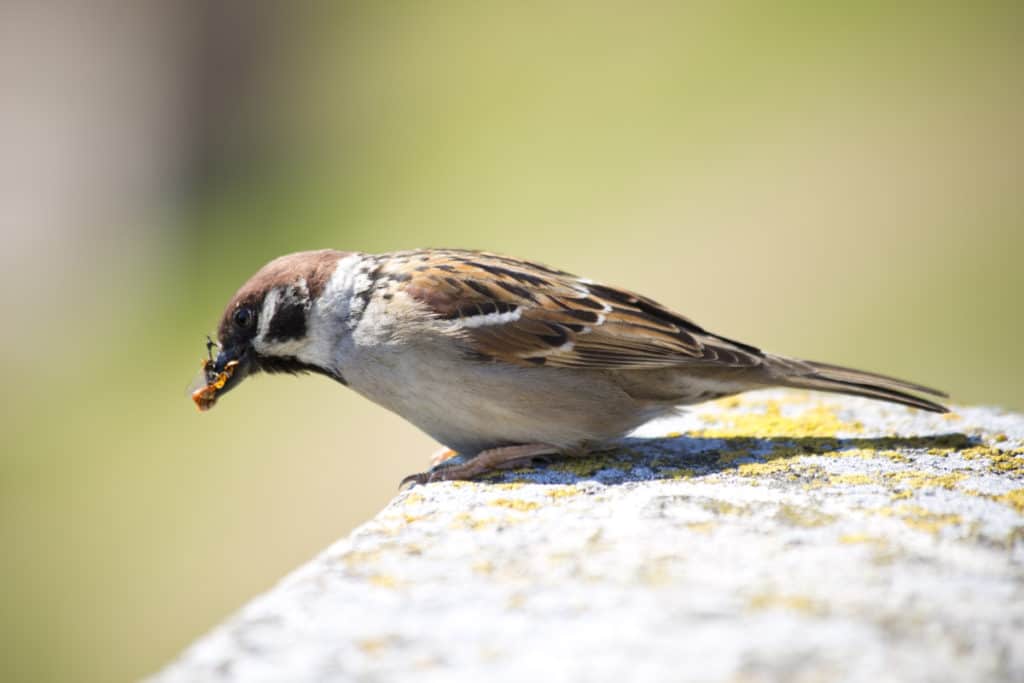
Colorful bee-eaters are one of the best-known examples and will carefully remove the wasps’ stinger before munching on it.
Other birds which enjoy snacking on wasps include bluebirds, magpies, sparrows, and wrens.
Geckos
A key example of these wasp-eating reptiles is the mild-looking Asian gecko which hunts Asian paper wasps.
Lizards and amphibians such as frogs and salamanders also feed on wasps.
Praying Mantises
As mentioned above, Asian giant hornets often take on larger prey such as mantids. However, the latter also feed on wasps and are even capable of taking on the very largest of them and living to tell the tale as well. But perhaps such lethal prowess should come as no surprise given mantises’ reputation for eating lizards and even birds.
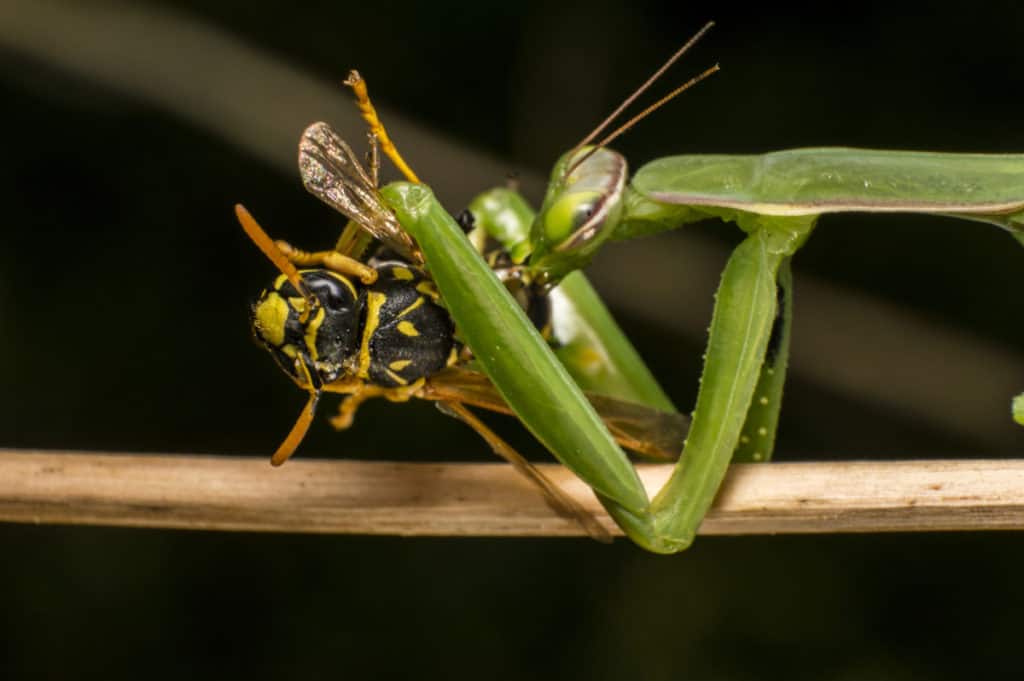
If you would like to know more about the diets of praying mantis and see what ferocious hunters they are then check out this article we have written, What Does A Praying Mantis Eat?
Spiders
The battle between arachnids and these stinging hexapods is by no means a one-sided affair and certain eight-legged arthropods also snack on wasps when the opportunity arises.
Take the yellow garden spider, which despite being frequently targeted by parasitoid wasps, will also feed on them if they can win the battle. A key reason for its success in this regard may be its wide web which contains sticky strands making it an excellent trap for flying insects.
If you are interested in more about the diet of spiders then take a look at this article we have written, What Do Spiders Eat? (Their Fascinating Diets Revealed)
The Wrap Up
From insects through nectar, honey to pollen, and even human food, wasps enjoy one of the most varied diets of insects all over the globe throughout their larval and adult stages.
They are also remarkably skilled hunters, evidenced by their ability to plan stealth or organized attacks and overwhelm larger or more numerous opponents.
The fact that some of them such as yellowjackets are actually capable of eating human food such as processed meats, pastries, and soda shows how especially adaptable they are.
And yet, there is a more sinister side to certain species which decimate essential insects such as bees and other pollinators like moths and butterflies, and which may also engage in cannibalism as well.
Social members of the species also have the distinction of actually deriving nourishment from their young thanks to the sweet fluid they produce.
And yet, despite their status at the very top of the food chain, they too are occasionally hunted by predators who are protected from their stings or which have learned how to neutralize them.
If you are interested we have written more articles about the diets of other bugs. The links to them are below:
What Do Baby Praying Mantis Eat?
Do Grasshoppers Eat Ants? Or Is It The Other Way Around?
Vulture Bees: There Are Meat Eating Bees And They Make Honey
Sources
https://www.nationalgeographic.com/animals/article/mutualism
https://www.nhm.ac.uk/discover/what-do-wasps-do.html
https://www.expressnews.com/news/local_news/article/Science-looks-to-Mexican-honey-wasp-4450812.php
https://texasinsects.tamu.edu/cicada-killer/
https://www.mercurynews.com/2018/08/23/tarantula-hawks-steer-clear/
